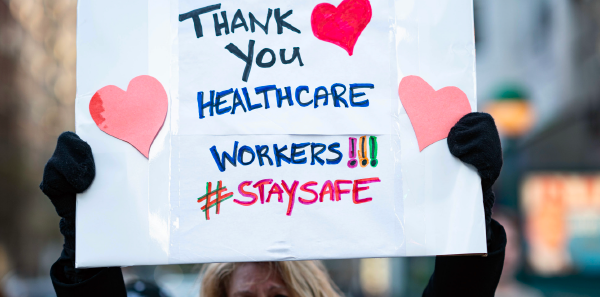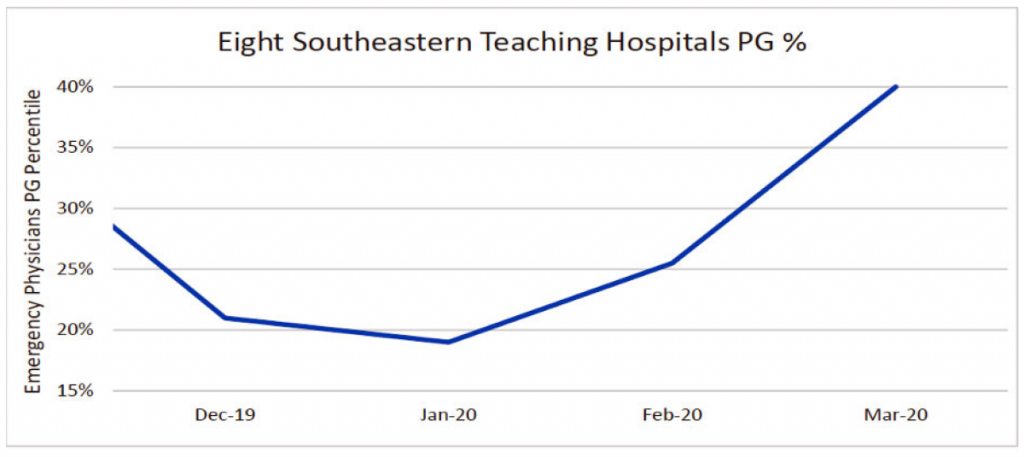
The COVID-19 pandemic has changed life as we know it. A fluid situation, there has been great focus on COVID-19 case incidence rates, mortality rates, and possible treatments. There has also been a surge of public appreciation for frontline medical workers, including first responders, emergency physicians, nurses, physician assistants, and medical staff in general. That acknowledgement is correlating to better patient satisfaction scores during emergency department visits. In the Southeastern region (where I am an EM resident physician), there has been an upward trend in patient satisfaction scores for emergency department visits during the COVID-19 period.
Explore This Issue
ACEP Now: Vol 39 – No 06 – June 2020Emergency departments ebb and flow in volume and acuity, even many times throughout a day. Before the start of the COVID-19 pandemic, emergency departments around the country were in what might be referred to as a season of bed-holds, which had its own challenges. Prolonged ED wait times, patients in hallway beds, crowded waiting rooms; all of these problems generally correlate to suboptimal care and lower patient satisfaction scores.

(click for larger image) Figure 1: Press Ganey patient ssurvey ratings for eight Southeastern teaching hospitals, Nov. 2019–March 2020.
Did things change during the COVID-19 outbreak? To find out, emergency medicine program evaluated patient satisfaction, utilizing Press Ganey (PG) scores, at eight large teaching hospitals in the Southeastern region. These scores have several components for evaluating emergency physicians, including time to listen, courtesy, informative treatment, and concern for comfort. From Nov. 2019 through March 2020, 4,856 Press Ganey patient surveys were returned (3,994 Nov. 2019–Feb. 2020 pre-COVID and 862 March 2020 COVID era). During the pre-COVID time, PG surveys scored in the 25th percentile of all PGs in the country (63.8 percent “top-box,” the highest rating score) as compared to scoring in the 40th percentile of all PGs (67.4 percent top-box) during the COVID-19 period. These data were statistically significant (chi-squared analysis with P=0.043, see Figure 1).
 Patient satisfaction scores, as represented by the PG score, were significantly higher during the COVID-19 month compared to the pre-COVID months for eight teaching hospitals in the Southeastern region of the United States. During the pandemic, ED volumes have been lower in many parts of the country. This translates to fewer hallway beds, shorter waiting times, and more patient-physician time. While our patient volumes have decreased, there has also been a decrease in staffing as we adjust coverage schedules to lower censuses. Therefore, our increase in scores should not be solely attributed to more time and resources being available for each patient.
Patient satisfaction scores, as represented by the PG score, were significantly higher during the COVID-19 month compared to the pre-COVID months for eight teaching hospitals in the Southeastern region of the United States. During the pandemic, ED volumes have been lower in many parts of the country. This translates to fewer hallway beds, shorter waiting times, and more patient-physician time. While our patient volumes have decreased, there has also been a decrease in staffing as we adjust coverage schedules to lower censuses. Therefore, our increase in scores should not be solely attributed to more time and resources being available for each patient.
Outside of the emergency department, medical professionals have been recipient of widespread support and appreciation by local and national media, ranging from standing ovations recorded in Istanbul, London, Buenos Aires, and Tamil Nadu, India, to free smoothies, reduced-cost gas, and even parades. The rise in patient satisfaction scores seen  in our corner of the United States further demonstrates the support and gratitude from within our own communities. As the Washington Post put it, “In the fight against coronavirus, the world gives medical heroes a standing ovation.”
in our corner of the United States further demonstrates the support and gratitude from within our own communities. As the Washington Post put it, “In the fight against coronavirus, the world gives medical heroes a standing ovation.”
We are striving to learn how to treat this disease and adapt to our new reality. Our data, and the outpouring of public support, indicate that taking take the time to listen to our patients and continuing to provide courteous and informative treatment in these challenging times are being noticed.
Disclaimer: This research was supported (in whole or in part) by HCA and/or an HCA-affiliated entity. The views expressed in this publication represent those of the author(s) and do not necessarily represent the official views of HCA or any of its affiliated entities.
Pages: 1 2 | Single Page




No Responses to “ED Patient Satisfaction Is Increasing Despite Global COVID-19 Pandemic”